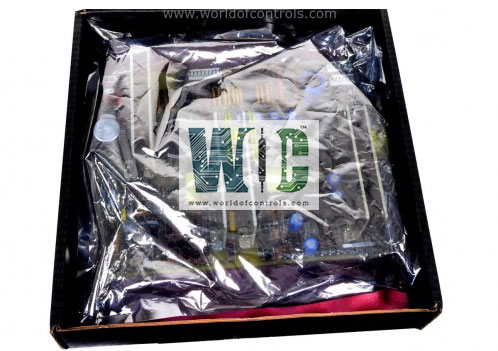SPECIFICATIONS
Part No.: IS220VAICH1DAA
Manufacturer: General Electric
Country of Manufacture: United States of America (USA)
Temperature :0 to 60 oC
Size: 10.26 in x 0.782 in x 7.375 in
Power consumption: Less than 31 MW
Number of channels: 24
Product Type: Analog Input Board
Availability: In Stock
Series: Mark VI
Functional Description
IS220VAICH1DAA is an Analog Input Board developed by GE. It is a part of the Mark VI control system. The Analog Input Board (VAIC) manages analog signals within the system, offering versatile functionality for both input and output control.
Input Processing
- The board is capable of accepting up to 20 analog inputs. This extensive input capacity allows for thorough and detailed monitoring of various parameters within the system. These inputs can come from a wide range of sensors and transducers, including those measuring temperature, pressure, flow, and other critical variables. By accommodating multiple inputs, the board supports complex and high-resolution monitoring requirements, which are essential for maintaining optimal system performance and safety.
- In addition to its input capabilities, the board controls four analog outputs. These outputs are used to send precise command signals to other parts of the system or to external devices. This functionality ensures accurate and reliable execution of control commands, which is crucial for managing system operations and making adjustments based on the monitored inputs.
- Each Analog Input terminal board is designed to accommodate ten inputs and two outputs. This configuration provides flexibility in system design and scalability for expanding monitoring and control capabilities. The modular nature of the terminal board allows for easy integration into the overall system, enabling users to customize their setup according to specific needs and requirements.
- Connections between the terminal board and the VME rack, where the processor board is housed, are established via cables. These connections ensure that the analog signals from the terminal board are reliably transmitted to the processor board for processing. The VME rack provides a standardized environment for housing and connecting various system components, facilitating seamless integration and communication within the control system.
- The processor board performs the function of converting analog inputs into digital values. This conversion is essential for further processing and analysis by the control system. The digital values derived from the analog signals are used to make data-driven decisions, control processes, and ensure that the system operates within the desired parameters. The accuracy and efficiency of this conversion process are vital for maintaining the overall performance and reliability of the control system.
Data Transfer and Conversion
- Upon conversion, digital values are transmitted over the VME backplane to the VCMI board, facilitating seamless data transfer within the system.
- Subsequently, data is relayed to the controller, enabling real-time monitoring and control functionalities.
Operational Requirements
- To monitor all 20 inputs effectively, the VAIC necessitates the utilization of two terminal boards, ensuring comprehensive coverage.
- For output operations, the VAIC employs digital-to-analog conversion techniques, translating digital values into analog currents.
- These analog currents are then directed through the terminal board into the respective customer circuits, enabling precise output control and command execution.
TMR Configuration
- In a TMR setup, input signals from the terminal board are distributed to three separate VME board racks: R, S, and T, each equipped with a VAIC.
- Output signals are processed using a proprietary circuit that leverages inputs from all three VAICs, ensuring redundancy and fault tolerance.
- In case of a hardware failure, the faulty VAIC is isolated from the output circuit, while the remaining two boards continue to generate the required current, maintaining
- operational integrity.
This redundant setup enhances system reliability, minimizing downtime and ensuring continuous operation even in the event of component failures.
Simplex Configuration
- In a simplex configuration, the terminal board directly supplies input signals to a single VAIC.
- The single VAIC assumes responsibility for processing all input signals and generating the required current for outputs.
- While lacking the redundancy of a TMR setup, the simplex configuration remains suitable for applications where redundancy is not a critical requirement, offering a cost-effective solution for straightforward control and monitoring tasks.
The WOC team is always available to help you with your Mark VI requirements. For more information, please contact WOC.
Frequently Asked Questions
What is IS220VAICH1DAA?
It is an Analog Input Board developed by GE under the Mark VI series.
What identification system does the terminal board utilize?
The terminal board incorporates its unique identification device, which is interrogated by the VAIC board. This identification mechanism is vital for ensuring compatibility and seamless integration within the system.
What information does the board ID device contain?
The board ID device contains essential details encoded into a read-only chip. These details include the terminal board's serial number, board type, revision number, and the specific connector locations (JR, JS, JT).
How does the system respond to a mismatch in board identification?
When the I/O processor reads the chip and detects a mismatch between the retrieved information and the expected specifications, it triggers a hardware incompatibility fault. This fault serves as an alert mechanism, indicating a potential issue that requires attention and resolution to maintain system integrity and functionality.
